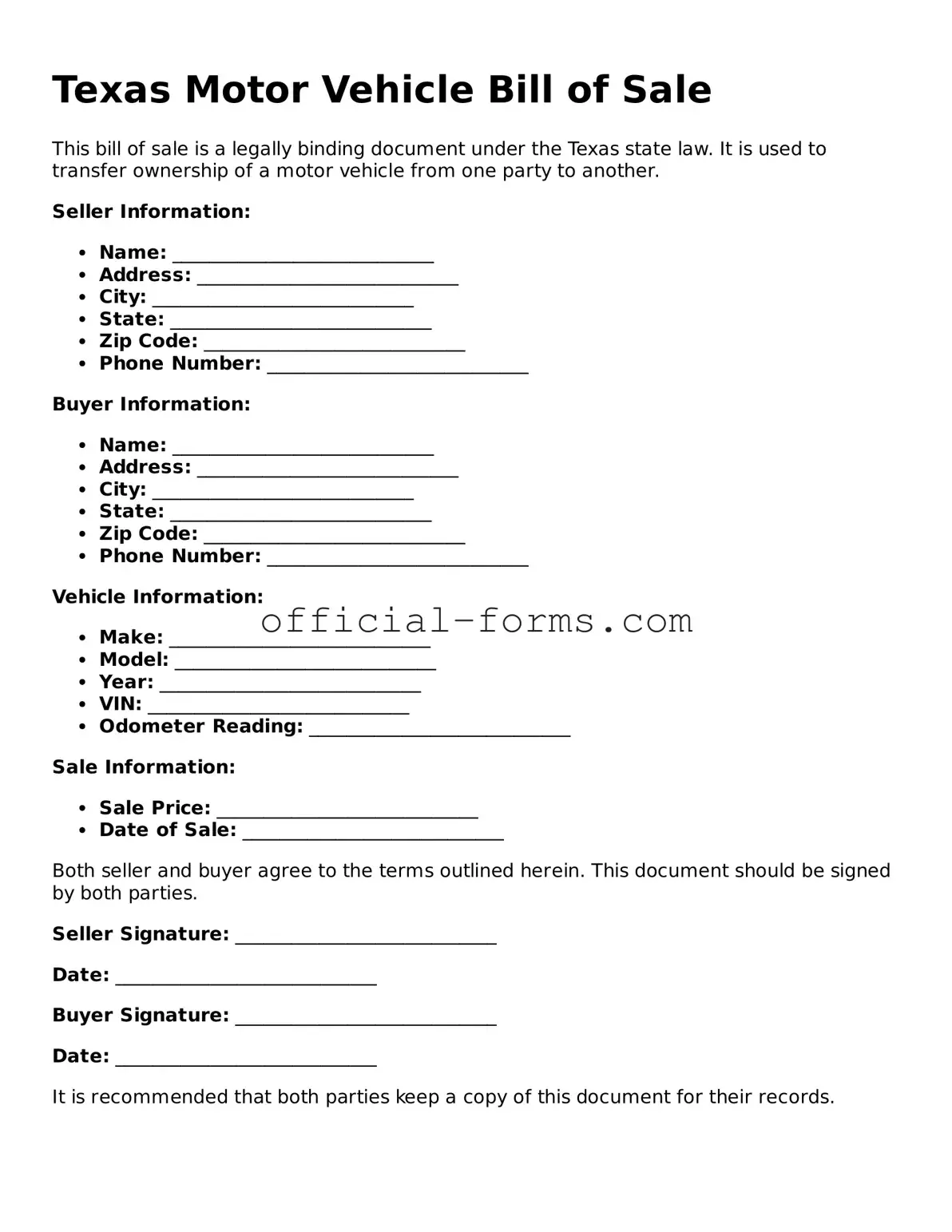Filling out the Texas Motor Vehicle Bill of Sale form can seem straightforward, but many individuals make common mistakes that can lead to complications down the line. One frequent error is neglecting to provide the correct vehicle identification number (VIN). The VIN is crucial for identifying the vehicle and ensuring that the transaction is valid. An incorrect or missing VIN can lead to ownership disputes or issues with registration.
Another common mistake involves failing to accurately record the sale price. The sale price should reflect the agreed amount between the buyer and seller. If this figure is omitted or incorrectly stated, it may raise questions during tax assessments or future transactions. Buyers and sellers should ensure that this figure is clear and precise.
People often overlook the importance of signatures. Both the buyer and seller must sign the form for it to be legally binding. A missing signature can render the document invalid, leading to potential legal issues. It is essential to double-check that both parties have signed and dated the form.
Additionally, individuals sometimes forget to include their contact information. Providing a phone number or email address is beneficial for both parties in case any questions arise after the sale. This omission can complicate future communications regarding the vehicle.
Another mistake is not providing the correct date of the sale. The date is vital for establishing when the transaction occurred, which can affect registration and liability. A misdated form can create confusion and may complicate legal matters if disputes arise later.
Some individuals fail to indicate whether the vehicle is being sold "as-is" or with warranties. This distinction is important as it clarifies the responsibilities of both parties regarding potential repairs or issues with the vehicle after the sale. Without this information, misunderstandings can lead to disputes.
People also sometimes neglect to check for any liens on the vehicle. If a lien exists, it must be disclosed in the bill of sale. Failing to mention a lien can result in legal repercussions for the seller and potential financial burdens for the buyer.
Another frequent oversight is not keeping a copy of the completed bill of sale. Both parties should retain a copy for their records. This document serves as proof of the transaction and can be important for future reference, especially in the case of disputes or if the buyer needs to register the vehicle.
Lastly, individuals may not review the entire form before submission. Taking the time to carefully read through the completed form can help identify any errors or omissions. A thorough review can prevent complications and ensure a smoother transaction.
